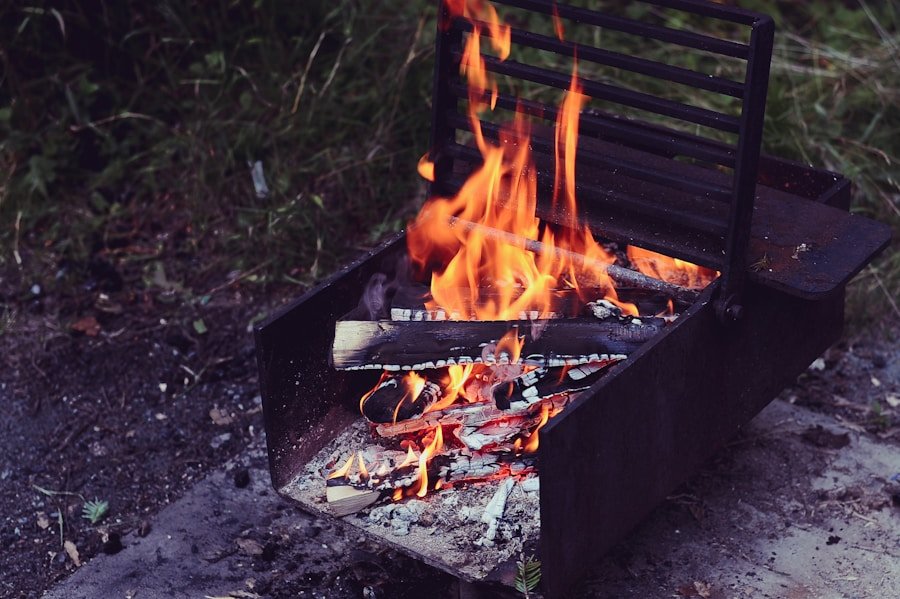When engaging in tubing and rafting activities during camping trips, the significance of a well-fitting life jacket cannot be emphasized enough. A life jacket that fits correctly can be the deciding factor between life and death in the event of an accident on the water. A properly fitting life jacket provides the necessary buoyancy to keep the wearer’s head above water and allows for unrestricted movement, ensuring a comfortable and enjoyable experience.
Moreover, a well-fitting life jacket is vital for ensuring its effectiveness in emergency situations. An ill-fitting life jacket may fail to provide adequate buoyancy or even detach in the water, posing a significant risk to the wearer’s safety, particularly in fast-moving water or rough conditions. Therefore, it is essential to take the time to ensure a proper fit, as this crucial step can significantly impact one’s safety and well-being during tubing and rafting activities.
Key Takeaways
- Proper fit of a life jacket is crucial for safety during tubing and rafting in camping trips
- Choosing the right life jacket for tubing and rafting involves considering safety standards and activity-specific features
- Tips for properly fitting a life jacket include adjusting straps and ensuring a snug but comfortable fit
- Comfort and mobility in a life jacket are important for enjoying water activities while staying safe
- Life jackets play a crucial role in ensuring safety during camping trips and should be properly maintained and cared for
Choosing the Right Life Jacket for Tubing and Rafting
Choose a Life Jacket Designed for Water Sports
Look for a life jacket specifically designed for water sports like tubing and rafting. These life jackets are typically more buoyant and feature additional elements such as padded shoulders and extra straps to ensure a secure fit.
Consider the Water Conditions
The type of water you’ll be tubing and rafting in is also crucial. If you’ll be in fast-moving water or rough conditions, opt for a life jacket with a higher buoyancy rating to ensure you stay afloat. In calmer waters, a standard life jacket may be sufficient.
Fit, Comfort, and Additional Features
Don’t forget to consider the fit and comfort of the life jacket, as well as any additional features that can enhance safety, such as pockets or reflective tape.
Understanding Safety Standards for Life Jackets
When it comes to safety standards for life jackets, there are several key factors to keep in mind. First and foremost, it’s important to ensure that any life jacket you purchase meets the safety standards set forth by organizations such as the U.S. Coast Guard. These standards ensure that the life jacket provides the necessary buoyancy and features to keep you safe on the water. Additionally, it’s important to consider the specific requirements for tubing and rafting when choosing a life jacket. For example, some states may have specific regulations regarding the type of life jacket that must be worn while tubing or rafting, so it’s important to familiarize yourself with these regulations before hitting the water. By understanding and adhering to safety standards for life jackets, you can ensure that you are properly equipped for a safe and enjoyable tubing and rafting experience during your camping trip.
Tips for Properly Fitting a Life Jacket
Properly fitting a life jacket is essential for ensuring your safety and comfort while tubing and rafting during camping trips. To ensure a proper fit, start by selecting the right size based on your weight and chest size. It’s important to try on the life jacket before purchasing it to ensure that it fits snugly but comfortably.
Adjust the straps and buckles as needed to ensure a secure fit, making sure that the life jacket does not ride up or shift while in the water. Additionally, it’s important to consider any additional features such as padded shoulders or adjustable straps that can help customize the fit of the life jacket. Once you have adjusted the straps and buckles, perform a quick safety check by pulling up on the shoulders of the life jacket to ensure that it does not ride up and that it provides adequate coverage for your chest and torso.
By following these tips for properly fitting a life jacket, you can ensure that you are properly equipped for a safe and enjoyable tubing and rafting experience during your camping trip.
Ensuring Comfort and Mobility in a Life Jacket
While safety is paramount when it comes to choosing a life jacket for tubing and rafting during camping trips, comfort and mobility are also important factors to consider. A life jacket that is too tight or restrictive can make it difficult to move freely and comfortably while on the water, which can detract from your overall experience. Look for a life jacket with adjustable straps and padded shoulders to ensure a comfortable fit that allows for full range of motion.
Additionally, consider any additional features such as mesh panels or ventilation ports that can help keep you cool and comfortable while wearing the life jacket. It’s also important to consider the weight and bulkiness of the life jacket, as a heavy or bulky life jacket can be cumbersome and uncomfortable to wear for extended periods of time. By prioritizing comfort and mobility when choosing a life jacket for tubing and rafting, you can ensure that you are properly equipped for a safe and enjoyable experience on the water during your camping trip.
The Role of Life Jackets in Camping Trips
Life jackets play a crucial role in ensuring the safety of campers during tubing and rafting activities. In addition to providing buoyancy and keeping campers afloat in the event of an accident, life jackets also serve as a visual aid for rescuers in the water. Brightly colored life jackets with reflective tape can help rescuers locate campers quickly in the event of an emergency, which can be especially important in fast-moving water or low-light conditions.
Furthermore, wearing a life jacket sets a positive example for other campers and reinforces the importance of water safety during tubing and rafting activities. By making it a priority to wear a life jacket at all times while on the water, campers can help create a culture of safety and responsibility within their camping group. This not only helps ensure the safety of all campers during tubing and rafting activities but also promotes a positive camping experience for everyone involved.
Maintaining and Caring for Your Life Jacket
Proper maintenance and care are essential for ensuring that your life jacket remains effective and reliable over time. After each use, rinse your life jacket with fresh water to remove any dirt or debris that may have accumulated while on the water. Hang the life jacket to dry in a well-ventilated area away from direct sunlight, as prolonged exposure to sunlight can cause the fabric and materials to deteriorate over time.
Additionally, inspect your life jacket regularly for any signs of wear or damage such as frayed straps or torn fabric. If you notice any damage, repair or replace the life jacket as needed to ensure that it remains safe and effective for future use. By taking the time to properly maintain and care for your life jacket, you can ensure that it will continue to provide the necessary buoyancy and safety features for tubing and rafting activities during your camping trips.
In conclusion, choosing a properly fitting life jacket is essential for ensuring your safety and comfort while tubing and rafting during camping trips. By understanding safety standards for life jackets, properly fitting your life jacket, prioritizing comfort and mobility, and maintaining your life jacket over time, you can ensure that you are properly equipped for a safe and enjoyable experience on the water during your camping trip. Remember, wearing a life jacket is not only a matter of personal safety but also sets a positive example for other campers and promotes a culture of safety within your camping group.
So before you head out on your next camping trip, take the time to choose a properly fitting life jacket that meets your specific needs and enjoy peace of mind knowing that you are prepared for any water-based adventure that comes your way.
FAQs
What is the purpose of a life jacket?
A life jacket is designed to keep a person afloat in the water and prevent drowning. It provides buoyancy and helps to keep the wearer’s head above water.
Why is it important for a life jacket to fit properly?
A properly fitting life jacket is essential for ensuring its effectiveness in keeping the wearer safe. If a life jacket is too loose, it may ride up and not provide adequate buoyancy. If it is too tight, it can be uncomfortable and restrict movement.
How should a life jacket fit for tubing and rafting during camping trips?
For tubing and rafting during camping trips, a life jacket should fit snugly but comfortably. It should not ride up when in the water, and the wearer should be able to move freely without the life jacket shifting around.
What are the different types of life jackets available for tubing and rafting?
There are several types of life jackets suitable for tubing and rafting, including inflatable life jackets, foam life jackets, and hybrid life jackets. Each type has its own advantages and considerations for fit and comfort.
How can I ensure a life jacket fits properly for tubing and rafting?
To ensure a life jacket fits properly for tubing and rafting, it is important to follow the manufacturer’s sizing guidelines and try on the life jacket before use. Adjust the straps and closures to achieve a snug and secure fit. It is also important to regularly check the fit of the life jacket and make adjustments as needed.













